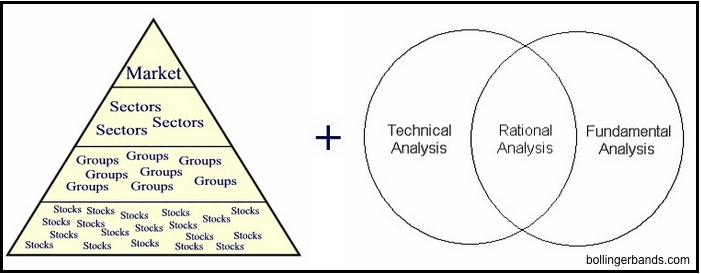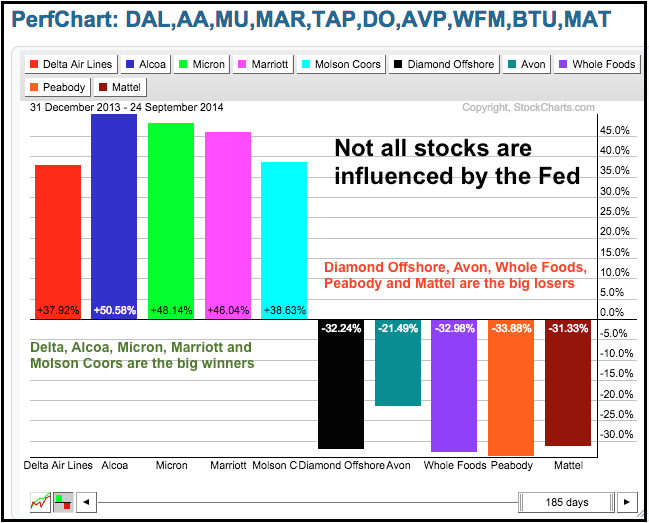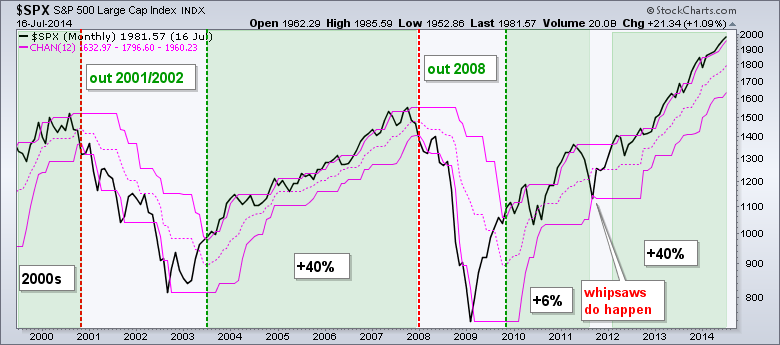|
|
Short answer: Yes. First, it is a market of stocks, not a "stock market". It is highly unlikely that the Fed is controlling the business decisions of Delta, Alcoa, Micron, Avon, Whole Foods, Mattel and other companies. Some stocks may be more interest rate sensitive than others, but Fed policy is probably not part of the boardroom debate at most companies. The PerfChart below shows year-to-date performance for ten stocks in the S&P 500. Is the Fed responsible for this performance differential? For the most part, the stock market is made up of individual stocks with company and industry group specific issues that are more important than Fed policy.
Further more, if the Fed is indeed controlling the market, then it will show up in the price charts and chartists will not miss a thing. This is the beauty of technical analysis. As technicians, we are not concerned with who is buying or selling or why they are buying or selling. We are only concerned with the supply-demand dynamics that drive equity prices.
Keeping up with the Fed and fundamental issues is a gargantuan task fraught with innuendo and complexity. Not only does one have to get these issues correct, but one also has to correctly predict the market's reaction to these issues. That puts two variables at work. Who knows when buy backs will stop or earnings will slow? Even if we get earnings correct, who knows what PE the market will assign to those earnings? Who knows when the Fed will actually tighten? And buy how much and how fast? Bernanke started the taper talk in May 2013 when the S&P 500 was around 1650. Taper talk was reiterated in June and November, and tapering finally began in December 2013. The index dipped in June, but this did not derail the bull market and the S&P 500 hit 2000 in September. It is not the news that matters. Instead, it is the market's reaction to the news.

What really drives the stock market as a whole? It could be earnings, share buy backs, the Fed, momentum or a combination of factors. My best guess would be a combination. Note that total 2013 earnings for the companies in the S&P 500 hit $107, which was a record. The index finished 2013 at 1848, which was also a record. It seems logical that the index would finish at a record when earnings are at a record. It is also worth noting that companies bought back over $400 billion worth of stock in 2013. This also helped the stock market move higher because there was less supply. Throw in an accommodative Fed, some price momentum and the most hated bull market in years and we had a pretty good backdrop for an uptrend in the S&P 500.
Truth be told, we cannot know it all and technical analysis helps investors cut to the chase. Technical analysis is a great tool because price does in fact know it all. The basic assumption behind technical analysis is that all known information is reflected in the price. All buyers and sellers have come together and agreed on a price that has an actual print. This makes price the most important of all indicators. Price does indeed fluctuate along with supply and demand, but trends and patterns do take shape over time.
Technical analysis can help investors in at least three areas: stock selection, risk control and broad market timing.
- Stock selection: technical analysis gives investors the tools to find stocks in uptrends and focus on stocks that show relative strength.
- Risk control: technical analysis gives investors timing tools that help with entry points, risk-reward assessment and exit points.
- Broad market timing: simple trend following strategies would have kept investors out of the last two bear markets and prevented large drawdowns.
As the example above shows, a simple strategy using 12-month price channels would have kept investors out of the 2001-2002 bear market and out of the 2008-2009 bear market. The strategy turns bullish on a monthly close above the upper line and bearish on a close below the lower line. Preservation of capital is perhaps the single most important aspect of portfolio management. As the very least, technical analysis gives investors the tools to preserve their capital by avoiding large drawdowns.
Even investors using fundamental analysis can benefit from technical analysis. A 2013 research paper showed that portfolio managers using technical analysis had an edge over portfolio managers that did not employ technical analysis. Below is the abstract and link:
Based on a study of more than 10,000 actively managed equity and balanced funds, including about one-third of which employ technical analysis, the authors compared the investment performance of funds that use technical analysis versus those that do not using five metrics. They found that funds using technical analysis provided a meaningful advantage to their investors (link).
John Bollinger CMT CFA promotes the school of rational analysis, which combines fundamental analysis and technical analysis. Also note that the Chartered Financial Analyst (CFA) exam includes a section on....gasp....technical analysis. This section asserts that markets and stocks move in trends, and shifts in supply and demand alter these trends.

The market clearly has a message and that message is communicated through price action. Technical analysis teaches us how to interpret that message so we can become well-rounded traders and investors. May the trend be with you!
-Arthur Hill CMT and Cool-Aid Drinker





Posted by: Greg Novak September 26, 2014 at 02:59 AM
Posted by: Walter Mundell September 27, 2014 at 13:46 PM
Posted by: Jayaram Iyengar September 29, 2014 at 15:08 PM
Posted by: Stephen R Stewart September 29, 2014 at 20:20 PM
Posted by: Sylvia Melton October 01, 2014 at 08:44 AM
Posted by: bob phelps October 06, 2014 at 12:51 PM
Posted by: Maria Cabral October 28, 2014 at 10:16 AM